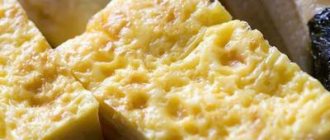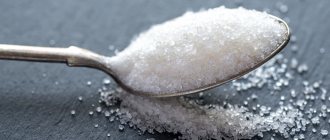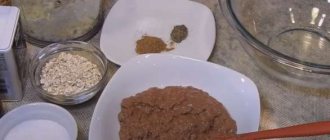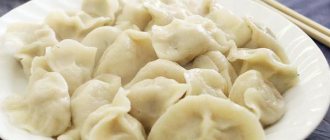Brynza is a pickled cheese made from a mixture of cow and sheep milk (less commonly goat milk) [1]. Despite the fact that progress has also affected cheese production, the production of feta cheese is approached especially carefully and traditionally. The cheese is soaked, given a special shape, and spices are carefully introduced (if necessary). Real cheese is white, barely crumbly, but not dense, easy to cut and has a salty taste of fermented milk products.
Brynza, made exclusively from sheep's milk, is the main cheese component of the Romanian, Moldavian, Macedonian and Bulgarian culinary traditions. The product is added everywhere: to salads, pies, snacks, first and second courses. The cheese is fried, marinated, baked and even boiled. Why is feta cheese so good and how to properly introduce a new product into our diet?
general characteristics
Brynza is a soft cheese of a standard white shade. Its taste and smell are fermented milk, medium salinity. The consistency of the product is dense, often hard. The cheese breaks easily, but does not crumble. The shade of cheese is uniform and can vary from milky white to pale yellow. There is no pattern, a minimum number of irregularly shaped voids is acceptable. The surface is smooth, clean, and does not form a crust. The surface structure can push away traces of serpyanka (a special mesh in which cheese is soaked). Slight deformation and minor cracks on the bars are allowed.
Content:
- general characteristics
- Brief historical background
- Useful properties of the product
- Chemical composition
- Use of the product in cooking
- Features of local production and consumption of cheese
- Possible consequences and contraindications
- How to select and store cheese
Bryndza can be easily made at home. Prepare the necessary equipment, ingredients and create your own cheese with a unique flavor palette. Homemade cheese is significantly different from store-bought cheese and saves the family budget.
Related Products
Cheddar Cheese (404 cal) Parmesan Cheese (420 cal) Cream Cheese (350 cal) Shredded Cheese (360 cal) Swiss Cheese (367 cal) Goat Cheese (360 cal) Shredded Cheese (420 cal) Cheese Gouda (356 cal) Hard cheese (392 cal) Mozzarella cheese (292 cal) Marble cheese (404 cal) Feta cheese (264 cal) Low fat cheese (195 cal) Blue cheese (353 cal) .) Brie cheese (334 kcal.) American cheese (371 kcal.) Processed cheese (364 kcal.) Brick cheese (371 kcal.) Camembert cheese (300 kcal.) Mexican cheese (365 kcal.) Cheese product (229 kcal.) ) Cheese spread (296 cal) Faux cheese (295 cal) Ricotta cheese (156 cal) Cheese topping (370 cal) Cheese substitute (248 cal) Queso Fresco (299 cal) Neuchâtel cheese (253 cal) ) Provolone Cheese (351 cal)
Brief historical background
The Arab East is considered the birthplace of cheese. Seven thousand years ago, thanks to the eastern merchant Kanan, the world received a special soft cheese with specific taste qualities and an aroma unlike anything else. Kanan, setting off on his next trade route, poured sheep's milk into a wineskin, covered it with a lid and several layers of cloth so that the milk would not spoil from the heat. After ten kilometers, Kanan decided to take a break and empty the bowl of milk. As soon as the traveler opened the vessel, white liquid poured out of it and a dense milk block fell out. Kanan, without realizing it, got hold of a method for making cheese. The traveler liked the taste and aroma of the dairy product, and he decided to repeat and improve this culinary innovation. This is how the world became acquainted with feta cheese.
Useful properties of the product
Natural cheese is an absolute record holder for calcium (Ca) and phosphorus (P) content. Consider the amount of fat in its composition and correctly distribute the product in your daily diet. It is recommended to consume cheese before 16:00 with a large amount of fiber for complete and rapid absorption.
High-quality cheese is aged for at least 30 days. It is this product that can benefit the body and have a beneficial effect on your appearance. Fats are the key to good health and good appearance. The regular presence of cheese in the diet will improve the condition of the skin, moisturize, nourish it with useful substances, and stop aging.
The calcium contained in feta cheese is more easily absorbed by the human body than the same nutrient in greens and berries. The substance will strengthen the skeletal system and improve the condition of the teeth.
Cheese cheese improves digestive function, accelerates metabolism and does not create additional stress on the abdominal organs. The product acts as a kind of disinfectant: it creates a special barrier for bacteria and suppresses the development of putrefactive microorganisms in the gastrointestinal tract [2].
Chemical composition
Nutritional value (per 100 grams of finished product)
| Characteristic | Brynza with cow's milk | Brynza with sheep's milk |
| Calories | 262 kcal [3] | 260 kcal [4] |
| Squirrels | 17.9 g | 21.1 g |
| Fats | 19.2 g | 18.8 g |
| Carbohydrates | 0.4 g | 0.3 g |
| Alimentary fiber | 0 g | |
| Water | 52 g | 53 g |
Vitamin composition (in milligrams per 100 grams of finished product)
| Vitamin | Brynza with cow's milk | Brynza with sheep's milk |
| Retinol (A) | 0,18 | 0,192 |
| Beta-carotene (A) | 0,006 | 0,007 |
| Thiamine (B1) | 0,04 | 0,05 |
| Riboflavin (B2) | 0,12 | 0,15 |
| Ascorbic acid (C) | 1 | 1 |
| Calciferol (D) | 0,00062 | 0,00061 |
| Tocopherol (E) | 0,3 | 0,4 |
| Nicotinic acid (PP) | 5 | 3,7 |
Nutrient balance (in milligrams per 100 grams of finished product)
| Nutrient | Brynza with cow's milk | Brynza with sheep's milk |
| Potassium (K) | 95 | 115 |
| Calcium (Ca) | 630 | 780 |
| Magnesium (Mg) | 24 | 35 |
| Sodium (Na) | 1200 | 1200 |
| Phosphorus (P) | 375 | 525 |
| Sulfur (S) | 221 | 211 |
| Iron (Fe) | 0,7 | 0,9 |
The benefits and harms of feta cheese
Considering the saltiness of feta cheese, it is quite natural to ask how harmless it is to eat cheese, will it only provide benefits or can it cause harm?
To begin with, it should be noted that the basis for the production of this variety can be not only cow’s milk: feta cheese can also be prepared from goat, sheep and even buffalo milk. Microelement and vitamin composition may vary slightly depending on this choice,
For example, cheese made from sheep's milk is especially rich in calcium, fluoride and protein. The product is recommended to be eaten to strengthen bones and teeth, as well as to increase the vitality of the body. It is believed that just 100 grams of feta cheese is enough to meet the body's daily need for calcium. Cheese cheese also contains vitamins B1 and B2, phosphorus and sodium.
Advertising - Continued below
As a fermented milk product, this type of cheese helps maintain healthy intestinal microflora. Adequate protein content benefits muscle development and aids recovery after intense physical activity.
Use of the product in cooking
Recipe for pie with spinach, egg and cheese
Nutritional value (per 1 serving of prepared dish)
| Calorie content | Squirrels | Fats | Carbohydrates |
| 674 kcal | 21.4 g | 44.8 g | 45.6 g |
We will need:
- potatoes (it is recommended to take young, medium-sized ones with thin skin) – 5 pcs.;
- fresh spinach – 500 g;
- feta cheese – 300 g;
- chicken egg – 2 pcs;
- butter – 30 g;
- puff pastry (it is recommended to use yeast-free dough) – 500 g;
- olive/vegetable oil – 2 tablespoons;
- onions – 1 piece;
- garlic – 2 heads;
- spices and herbs to taste.
Preparation
Peel the potatoes with a rough brush and boil in salted water. Drain the water when ready, let the potatoes cool, then cut into slices and place in a suitable container. Thinly slice the onion and fry in a drop of vegetable oil until golden brown. While frying the onions, add chopped garlic and your favorite spices.
Prepare the spinach: wash the plant, remove the stems, fold the leaves and cut into thin strips.
Cooking tip: Slice the spinach crosswise, not lengthwise.
Add the spinach to the pan with the spicy sautéed onions. Simmer it until the leaves become soft and pliable. Place the prepared mixture of onions, spinach and spices in a container.
Finely chop the cheese, add it to the container with spinach, add potatoes and spices. Prepare the filling: beat 2-3 chicken eggs (avoid forming peaks) and add to the mixture. Stir the resulting mixture carefully. While stirring, bubbles form in the egg mixture. It is important that they remain intact and do not burst during the cooking process.
Prepare the pan (approximate size: 26 cm): grease with vegetable oil or line with baking parchment. Roll out 500 grams of yeast-free dough to a thickness of 2 millimeters and carefully place on the bottom/walls of the mold. If there is too much dough or the mold is small, adjust the result with scissors. Cut small strips of remaining dough to create a braided pattern on the pie.
Place the filling in the baking dish, smooth it out and lightly fold the edges of the dough over the filling (to form a basket). Place the required amount of cheese on top of the filling. Take the cut strips and form a classic square pie pattern. You can be creative or completely abandon such decoration. Mix 1 raw egg with 1 tablespoon of milk, beat thoroughly and apply to the cake with a silicone brush.
Preheat the oven to 160°C and bake the pie for 40-50 minutes. Serve immediately after preparation. Try dipping a piece of pie in low-fat sour cream, choose your favorite sauce or drink that will create an excellent flavor tandem with the main dish. Now you have a good reason to gather the whole family at one table!
Features of local production and consumption of cheese
Brynza is a frequent guest of national cuisine:
- Ukraine;
- Russia;
- Bulgaria;
- Romania;
- Moldova;
- Balkan Peninsula.
The product is added to vegetable salads, meat/fish dishes, and used as a separate snack or main dish. Brynza is even combined with first courses and served with tea. Despite the differences in the culinary traditions of each country, feta cheese is eaten with a characteristic side dish: fried onions, garlic, rye or wheat bread, boiled or baked potatoes, eggplants [5].
The Ukrainian city of Rakhiv hosts annual feta cheese festivals. In the “center of Europe,” the streets are filled with an impromptu market, where homemade cheese is sold for a symbolic price. Soft cheese is the most important component of mamalyga (a traditional Carpathian dish). Poles from the Podhale region loved feta cheese so much that they decided to protect the product at the legislative level [6]. Podhale cheese is considered a regional product, and the standards of its preparation are extremely high. Residents of the North Caucasus also cannot imagine life without a cheese product. Cheese cheese is included in the daily diet of every adult. No wonder the North Caucasus is known for its long-livers.
Cheese cheese is an easily digestible product that nourishes the body with vitamins, protein, healthy fats and nutrients. Milk protein, which is part of feta cheese, is absorbed easier, faster and more efficiently by the body, which gives more energy, strength and muscle growth [7].
Properties of feta cheese
Nutritional value and composition | Vitamins | Minerals
How much does feta cheese cost (average price for 1 kg)?
Moscow and Moscow region.
240 rub.
Bryndza cheese is made primarily from pasteurized sheep's milk, which is often mixed with cow, buffalo or goat milk. As a pickled cheese, the taste and smell of feta cheese can be described as fermented milk. Its color resembles regular cottage cheese, and its moderately dense structure resembles Greek feta cheese.
The high taste and beneficial properties of feta cheese have long been appreciated by chefs of Ukrainian, Balkan, Moldavian and Romanian cuisine, where it is an important component of traditional national dishes. As an ingredient in some vegetable dishes, feta cheese is used as a filling for pies and dumplings, served with soups and meat dishes, as well as tea. Often this product also acts as a snack.
The most typical side dishes for a variety of dishes that include feta cheese include eggplant, fried onions, wheat bread, garlic and potatoes. For example, the most popular dish in the Carpathians is mamalyga, which is seasoned with grated cheese and fried onions with cracklings. By the way, the famous Brynza Festival is held in Rakhiv every autumn.
In Bulgarian cuisine, it is prepared in a special way: the feta cheese is sprinkled with red ground pepper, a little butter is added, and then it is tightly wrapped in parchment and baked in the oven. The dish prepared in this way has a pleasant aroma and a very juicy, delicate taste.
It is recommended to store the started cheese cheese in its “native” brine for two and a half weeks. If you forget and drain the liquid, don’t worry - wrap the cheese tightly in cling film or foil, so it will keep for about a week and a half. The calorie content of cheese is 262 kcal per 100 grams.
Possible consequences and contraindications
Cheese cheese is contraindicated for diseases:
- kidney;
- liver;
- biliary tract;
- stomach;
- pancreas;
- circulatory system;
- nervous system.
What is the reason for this? The cheese contains an excessive amount of salt. The accumulation of salt in the body is fraught with illness, swelling and poor health, so our organs work hard to remove it. An organ that is affected by the disease cannot perform its functions fully, and the quality of salt excretion will also suffer. The body's systems will begin to reduce productivity one after another, which can lead to tragic consequences. Don't put your body in danger for the sake of momentary happiness.
Is it possible to “bypass” contraindications? Yes! The amount of salt is reduced due to heat treatment of the food product. Place the cheese in boiling water for a few minutes, soak in water, fry or bake in the oven. This trick can only be used with the permission of the doctor.
Another absolute contraindication is lactose intolerance. The body simply will not be able to absorb the product and will provoke side effects in the form of nausea/vomiting, dizziness, loss of consciousness, bloating, the development of pain and the appearance of convulsions.
How to select and store cheese
The cheese goes on sale after 20 days of soaking in a special brine. 20 days is the minimum threshold, which can be increased by the manufacturer to 60 days or more. Transportation can take several hours or several calendar days (depending on the territorial location of the manufacturing plant and sales points). The buyer, looking at the label data, will never be able to determine the exact date of manufacture and time of soaking of the product [8].
Cheese with filling or marinade is soaked several times longer than usual.
How to choose high-quality cheese if the information on the label does not always correspond to reality [9]?
Crust
Best materials of the month
- Coronaviruses: SARS-CoV-2 (COVID-19)
- Antibiotics for the prevention and treatment of COVID-19: how effective are they?
- The most common "office" diseases
- Does vodka kill coronavirus?
- How to stay alive on our roads?
Bryndza, unlike most types of cheese, does not have a crust. A dried, dense edge indicates that the sales period has been exceeded. It is better to refuse such cheese. The longer a product sits on the counter, the fewer beneficial bacteria survive and end up on the consumer’s plate.
Surface specifics
Bryndza should not have a holey pattern, like some hard cheeses. The inside of the product must be completely filled. 1-2 voids of irregular shape are allowed for the entire head of cheese. The presence of more voids indicates an incorrect technique for preparing, soaking, transporting or storing the product.
How to store cheese at home
If brine cheese is prepared at home, store it in the same brine. And if the product is purchased in a store, you need to remember: feta cheese in an open package remains fresh for 4-5 days and is stored in brine. If for some reason it is not available, the product is wrapped in aluminum foil and then placed in a glass or enamel container.
It happens that pickled cheese cannot be eaten quickly. In this situation, a saline solution is prepared (pour 20 g of salt into 100 g of water). Cheese can be stored in brine for up to 1 year. It is advisable to change the brine monthly.
Warning! The longer the cheese sits in brine, the saltier the product will be.
Some housewives put cheese in the freezer for storage. It really doesn’t spoil longer, but it loses its taste.









